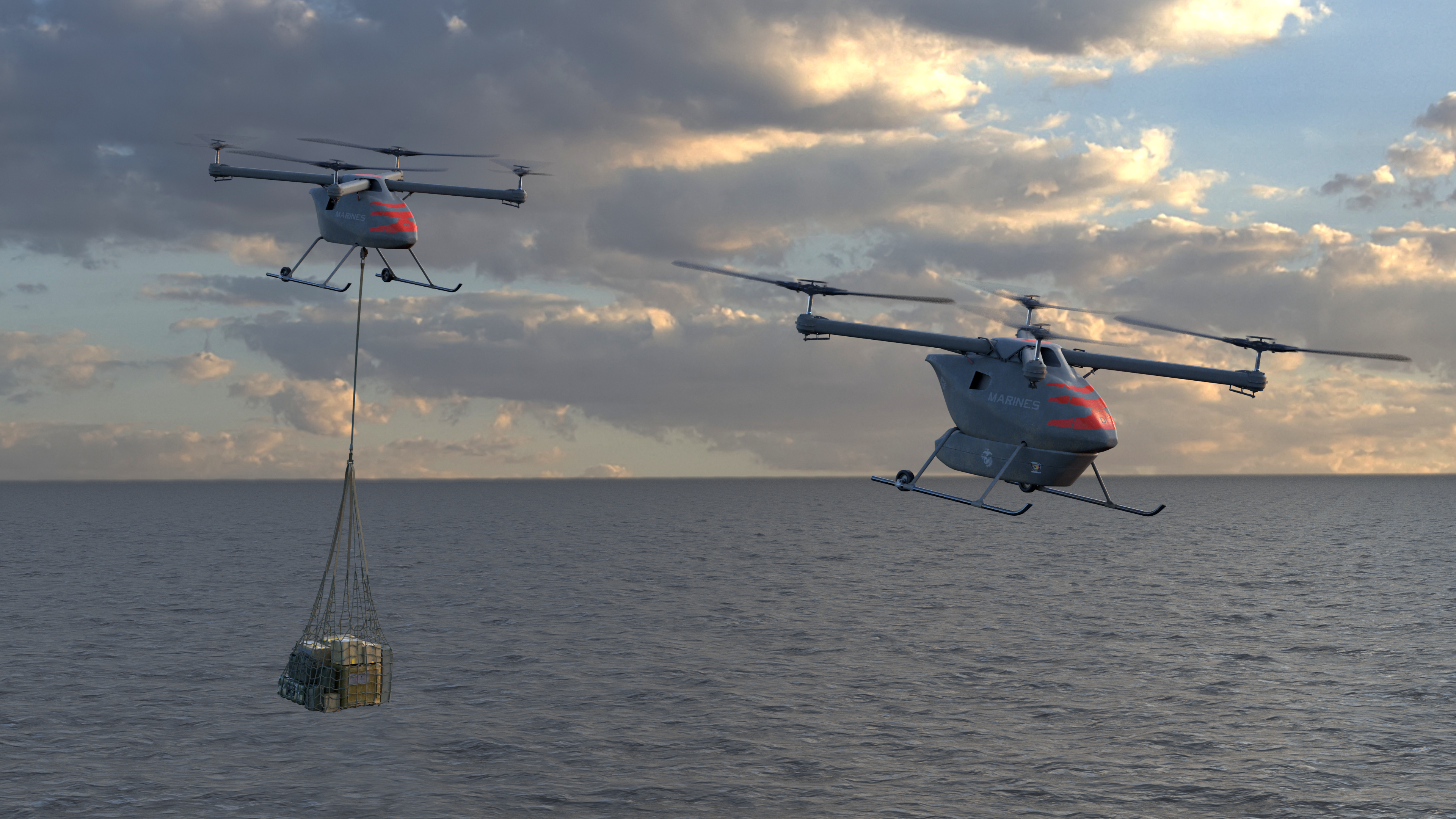Kaman Aerospace is preparing to start flight testing its Kargo UAV logistics vehicle later this year, with the U.S. Marine Corps having contracted it to build a prototype to be used for demonstration and evaluation purposes. The company is marketing the autonomous vehicle as a pilotless alternative to far heavier and more costly piloted helicopters such as the MV-22 Osprey that are currently used to resupply troops.
The Kargo UAV is powered by the R300 turboshaft engine that Rolls-Royce developed for light helicopters, such as Robinson’s R-66 model. It is expected to support trips of up to 500 nm carrying an 800-pound payload in either an internal conformal pod or in a sling beneath the aircraft.
The engine has been installed in the first prototypes and these have been integrated with a transmission developed by Kaman. The autonomous flight controls are based on sensors developed by Near Earth Autonomy and these have already been evaluated on other platforms.
U.S.-based Kaman has a strong track record in the rotorcraft market based on its K-Max heavy-lift helicopter and the SH-2G Seasprite. An uncrewed version of the 6,000-pound payload K-Max has already seen extensive service with the U.S. Marine Corps in war zones such as Afghanistan. During 33 months of operations, the K-Max carried more than 4.5 million pounds of supplies with a mission readiness rate of more than 95 percent.
Now Kaman is preparing to start autonomous flight demonstrations of the Titan version of the K-Max that will be available for commercial operations. Initially, it will have a payload of 4,500 pounds, but this is expected to rise to the full 6,000-pound capacity. The company is currently conducting verification flights for a new software update for the vehicle's flight controls and other systems.
The success of operations with an autonomous version of the K-Max prompted the private company to invest in the Kargo UAV to offer a lighter, lower-cost vehicle with the flexibility to operate multiple missions in hostile environments. Its objective is to allow high-volume resupply missions at a significantly reduced cost, while also avoiding fatalities among pilots while delivering supplies.
Kaman will seek approval for the Kargo UAV from the U.S. Department of Defense (DoD) as well as from the FAA and EASA. It also envisages potential civilian applications in areas such as cargo transportation, resupplying oil and gas platforms, and medical support. Kaman says the technology in the Kargo UAV is ITAR-compliant under DoD rules and so will be cleared for export to the military forces of approved countries.
“We know that in the future our troops are going to be dispersed—for example, in the Pacific—and that they will need resupply in a very different manner,” said Kaman’s senior director for business development, Romin Dasmalchi. “So, rather than use manned aviation with heavy, expensive aircraft, to resupply, what we’re offering is an alternative with a lighter aircraft so that you can take the risk you need to take to supply those troops.”
To get the new vehicle into service as soon as possible, and to maximize range and payload, Kaman opted not to base the design on electric propulsion as several new eVTOL companies, such as Kitty Hawk, MightyFly, Elroy Air, and Pipistrel, are doing. Instead, it chose to use the proven, in-service 300-shp R300 turboshaft that Rolls-Royce developed as a replacement for piston engines.
Unlike the K-Max, which employs a pair of intermeshing rotors, the Kargo UAV features four sets of rotors installed on booms mounted above the fuselage. The vehicle is expected to operate at speeds of up to 121 kts.
In August 2021, Transcend Air selected Kaman to build its planned Vy 400 tiltrotor at its facility in Jacksonville, Florida. The Vy 400 is expected to have a range of 450 miles and cruise speeds in excess of 400 mph. Transcend Air envisions the aircraft being used for regional passenger services, such as connecting Manhattan and the center of Boston in 36 minutes. The company claims it will be the world’s fastest helicopter and single-engine civil turboprop aircraft.
